
Oops! Something went wrong while submitting the form.

Display, overlay, in-stream ads - which one is better for me?! If you are confused and want to understand which type of YouTube ad is suitable for your advertising campaign, how much it's gonna cost you, and what to consider before investing money into video production, check out our guide to YouTube ads in 2022.
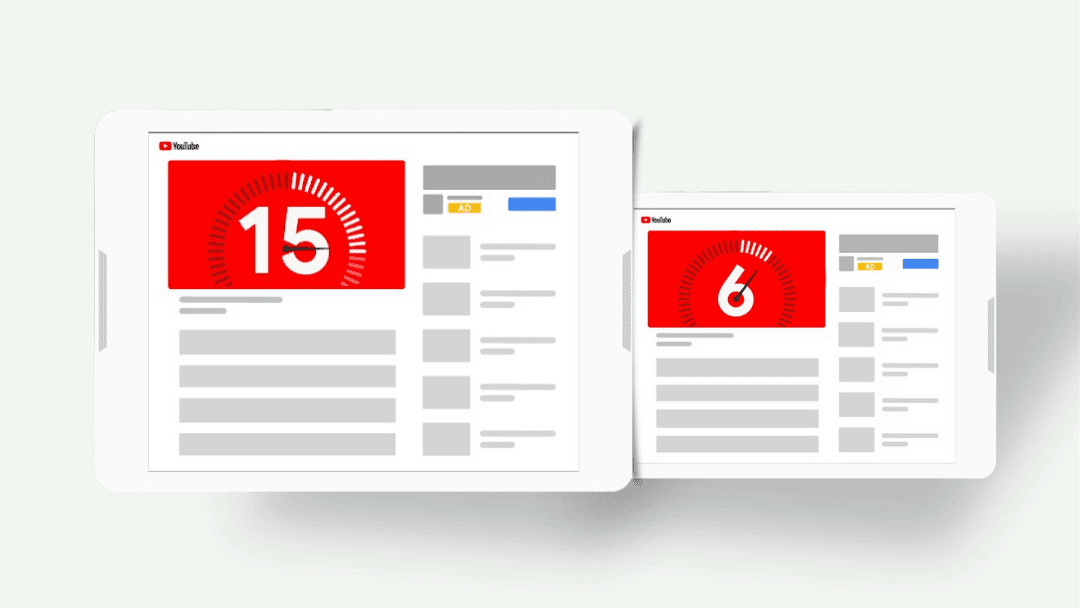
If you are still doubting whether to use YouTube ads or not, here are some facts that might convince you to do so:
Sounds convincing, isn’t it? If you decide to give YouTube ads a try, you’d definitely need to dig deeper into the topic and find out the best way to promote your brand with video ads.We’ve done our research and gathered all the necessary information in this guide. You’ll learn everything you need to know about advertising on YouTube:
The world's biggest video platform offers brands a wide range of advertising opportunities to reach their target audience. First of all, we need to understand that there are different categories of ads:
Video ads can be shown before, during, or after YouTube videos. Non-video ads include text and banner ads that are being displayed alongside the video content.And Premium ads are a mixture of the two, featuring HTML5 banner elements and a video.
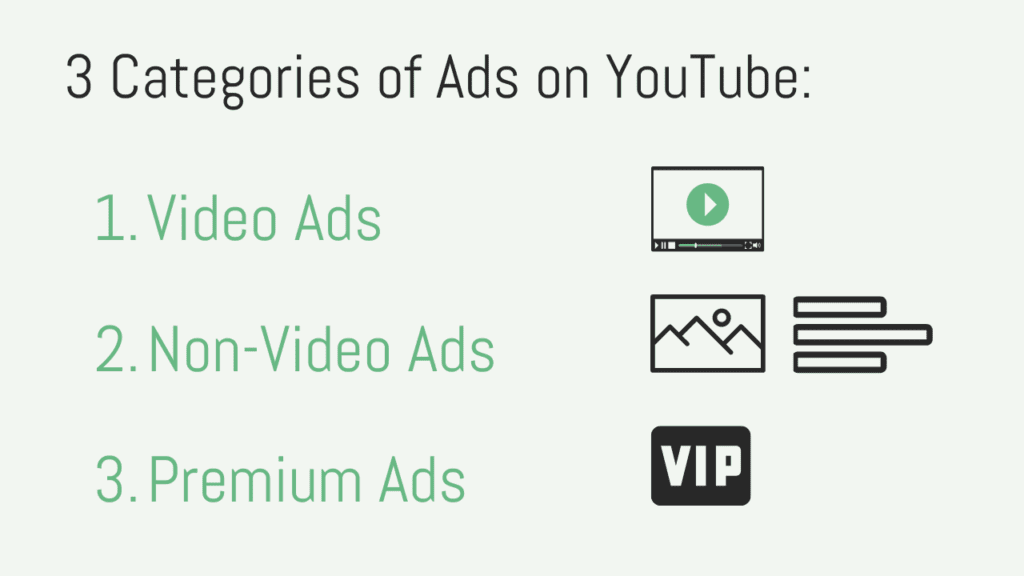
Video ads and non-video ads can be booked via Google Ads, just like any other Google text or display ad. Premium ads, however, can only be booked through a Google sales representative. YouTube calls these ads Reserved media placements on YouTube.
These three categories of YouTube ads then, in turn, comprise a range of ad formats, each with unique bidding options and ad specifications.
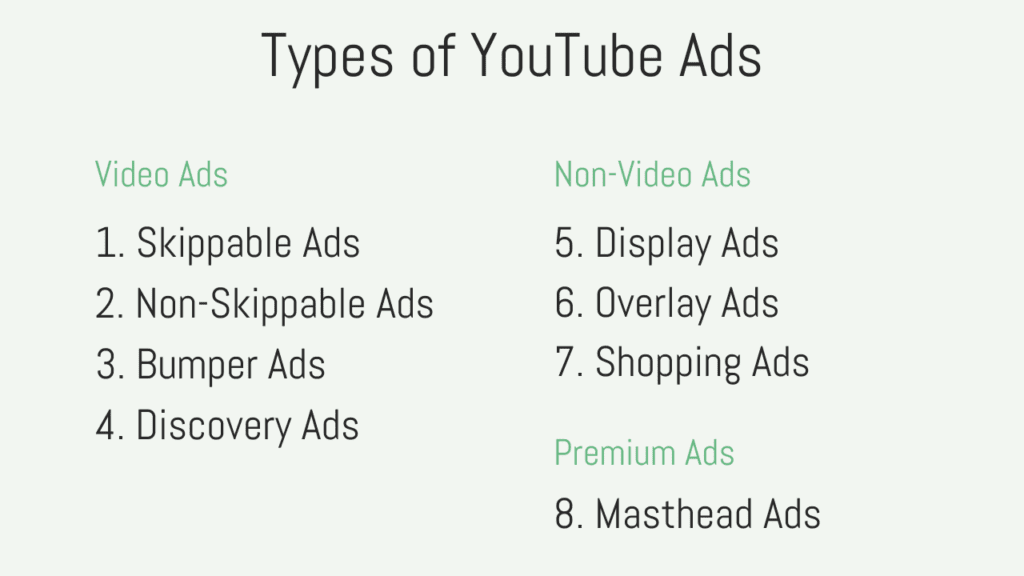
Let's go through all these ad formats to see which one is right for you. We start with the video ads since they are the most popular.
With YouTube's video ads you reach potential customers when they watch or search for videos. There are four key types you can invest on YouTube:
The four formats differ regarding their use case, where things are being displayed, and how you pay for them.
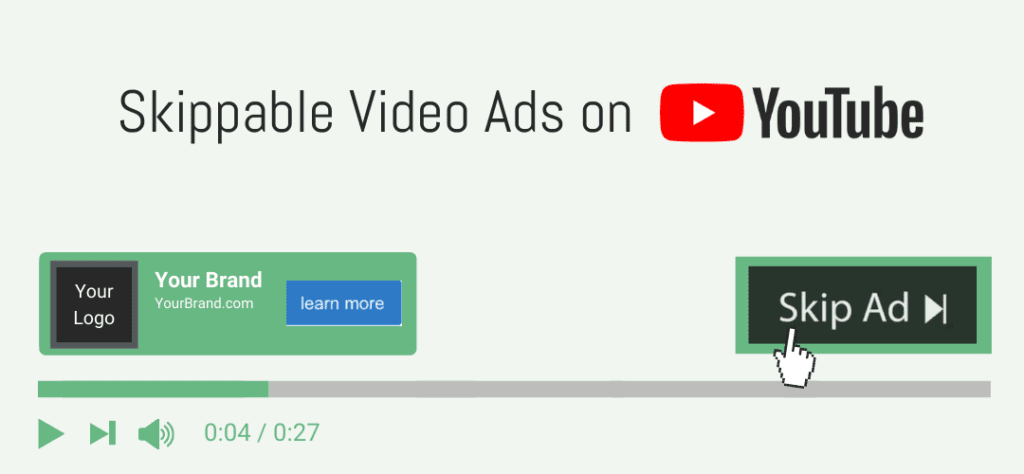
YouTube's skippable video ads can be placed before, during, or at the end of a video. Nomen est omen. With this type of ad a viewer can skip the ad after 5 seconds if he/she is not interested.If you go for this type of ad you can choose between three different bidding and billing models: 1. Cost-per-View (CPV), 2. Cost-per-Mille (CPM) and 3. Cost-per-Action (CPA).Out of these three, Cost-per-View (aka TrueView) is the most popular bidding method. The reason is that YouTube offers a very fair way of counting views. A billable view is only counted if a viewer
On average, YouTube ads feature a Cost-per-View of $0.010 – $0.03.CPM (cost per mille) bidding is self-explanatory. You pay based on the impressions of your video. The last bidding method is recently on the rise: CPA bidding (aka Target CPA). With this bidding type, you only pay for conversions. A conversion can be anything you define with Google Analytics: e.g. a signup, a product purchase, or a demo request. This campaign format is sometimes also called TrueView for Action.
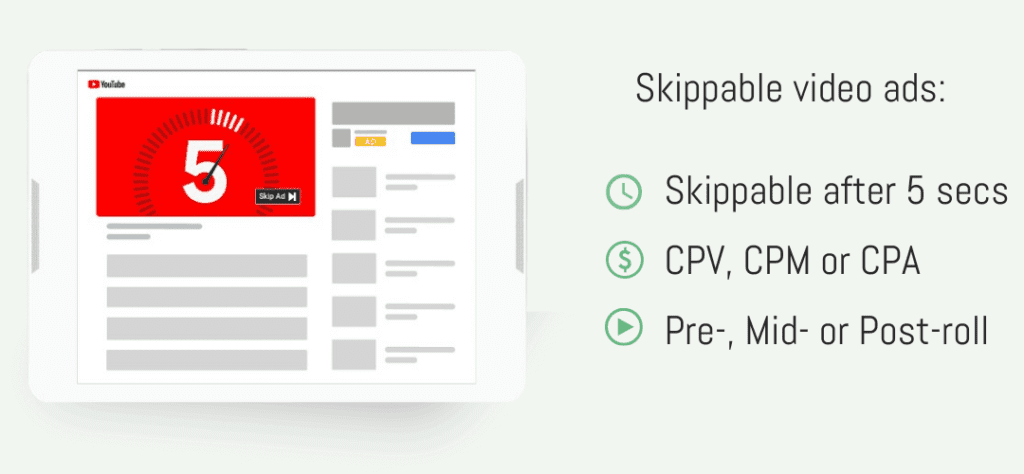
As a summary, the main advantage of skippable video ads is: You don’t pay for skipped views! The main disadvantage: Not everyone watches the entire ad. But when should you now use skippable video ads on YouTube? Our recommendation:Use this type of ads when one of the following two goals apply to you:Goal 1: Get More Leads or SalesFor instance, you have a webinar and you want people to sign up. In order to make the best out of in-stream ads, pick the right audience for your ad, and spend a bit more time on targeting settings. Do not use this ad if you want to promote your YouTube channel. You should rather create a separate video for this purpose and use this as your channel trailer.Goal 2: Get More Brand AwarenessIt is possible to increase brand awareness at low costs with video ads because even when people skip they see at least 5 seconds: you don’t pay but a viewer was nevertheless exposed to your brand.
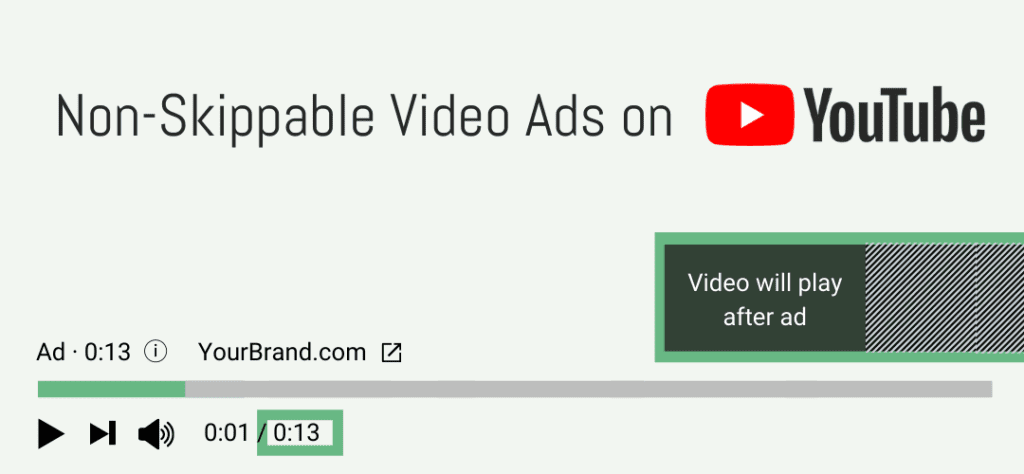
With this ad format, viewers don't have the option to skip your video ad. The maximum duration of the video ad is between 15 and 20 seconds depending on the country.Unlike skippable ads, you can here only pay on a CPM basis. That means you can set the maximum CPM you are willing to pay and then pay based on impressions.
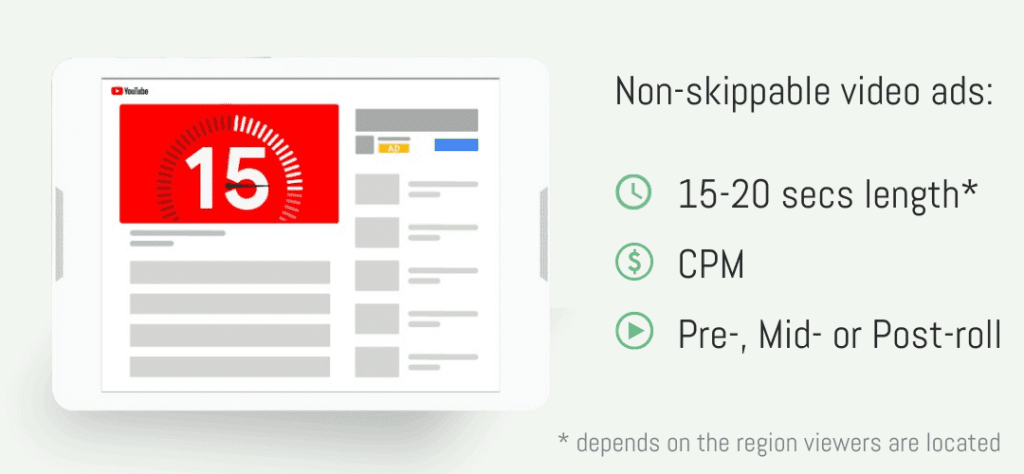
The main advantage of non-skippable video ads: Viewers watch the entire video.The main disadvantage: You pay for each and every view! Even for viewers who find it annoying and don’t pay attention to your ad. Just like TV advertising.Use this ad type if you need to push brand awareness by all available means. Regardless of the consequences.
Bumper ads are similar to the ones mentioned before (they can also be played before, during, or after a video). However, bumper ads are 6 seconds or shorter. In this case, viewers don't have the option to skip the ad.
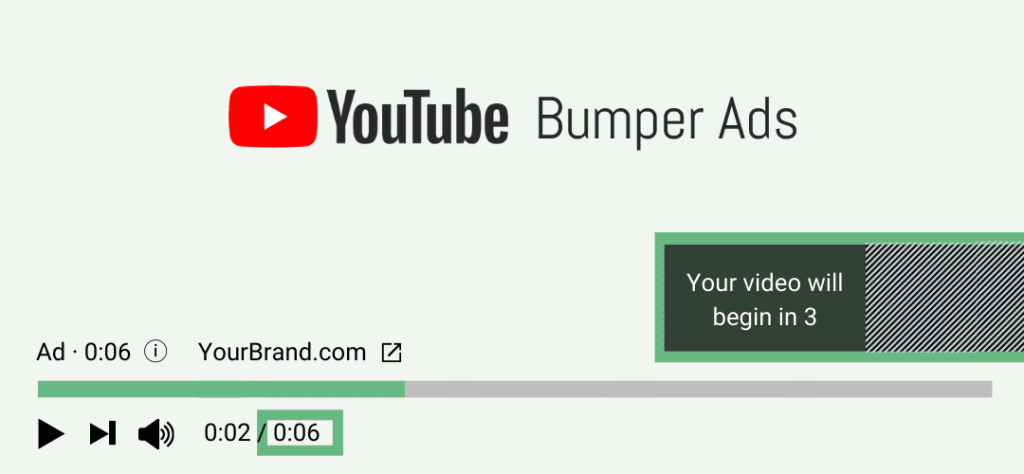
You are charged the same way as with non-skippable in-stream ads - on a CPM basis which is very simple for the control process.
Use this ad type when you want to reach viewers broadly with a short, memorable message with the goal of brand awareness and reach.
"Many large brands are using bumpers ads to drive upper-funnel goals like ad recall and awareness."Think with Google
A good source for inspiration: YouTube Ads Leaderboard.
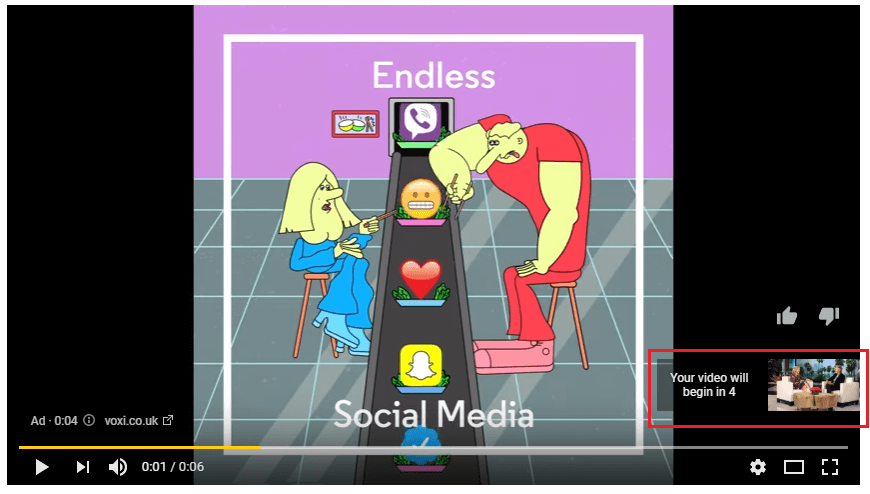
Discovery ads is a Youtube advertising format where YouTube places your video in three places:
Your video would look as if it was a regular video suggested by YouTube. The ad consists of a header, description, and a thumbnail - just like a normal video. The only difference is an ad symbol.
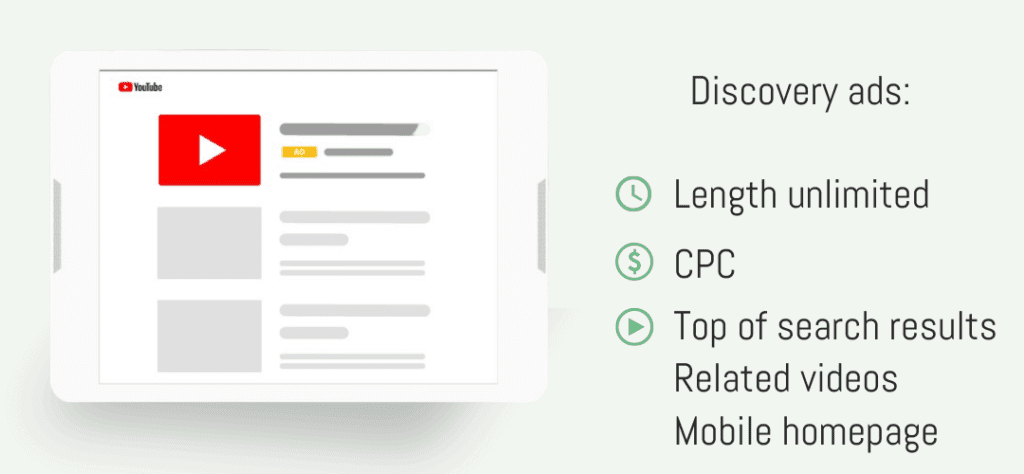
In this case, an advertiser is charged only when a viewer clicks on the thumbnail.
Use discovery ads to promote your video on YouTube with the goal of gaining more views and subscribers.
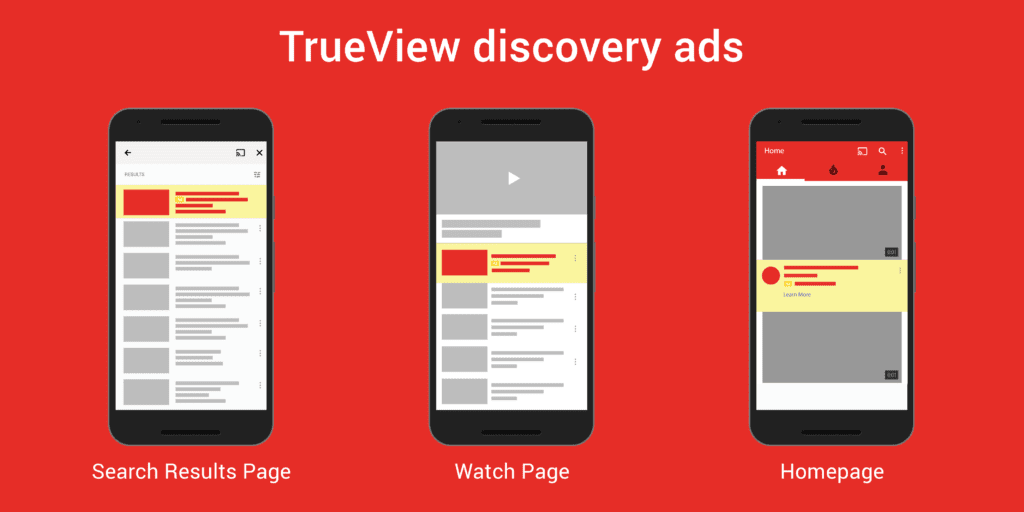
If your budget doesn't allow video production, you can opt for one of the non-video ad types:
Display ads are essentially banner ads that appear on the right-hand sidebar, and include an image and text, alongside a CTA with a link to your website. They come in multiple sizes and formats likeimage and animation, but none support autoplay sound to keep from interfering with the video player. Display ads are available on desktop only.
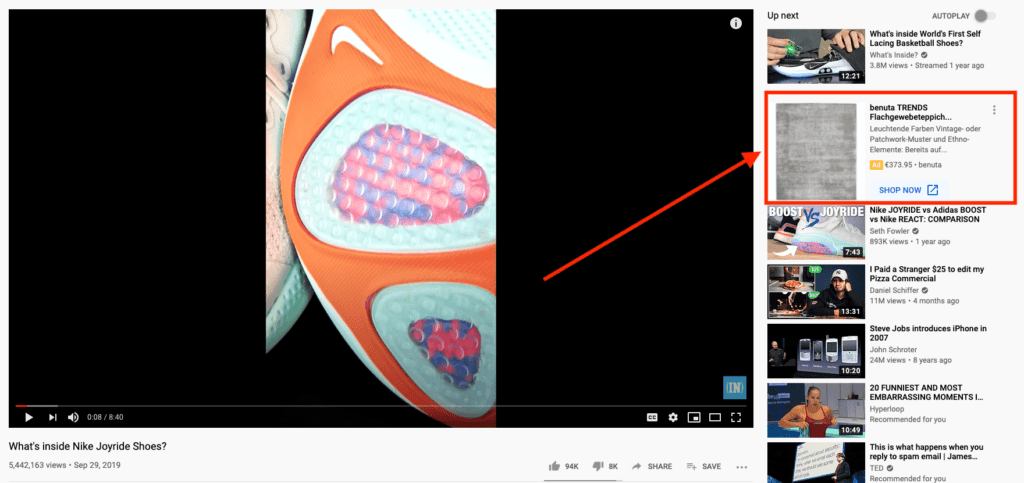
An advertiser gets charged when someone clicks on the ad.The main advantage of display ads - you can link to any website. Also, your ad will be permanently displayed on top of video suggestions (before and after the video). Lastly, it can be customized according to needs.The main disadvantage of display ads - it’s not in the focus of the viewer. Moreover, the ad format is limited: it can only be an image.
"YouTube display advertising allows businesses to drive key performance metrics with paid visual placements next to the platform’s video player."Instapage
Display ads are easy to set up and require no video production. Use them like regular banner ads either alone or to accompany a video ad with the goal of obtaining new leads, improving sales, or increasing brand exposure.
Overlay ads are semi-transparent ads that appear on the lower 20% portion of the video. An ad overlay essentially provides advertisers with the opportunity to place traditional banner advertising inside streamed video. Like display ads, overlay ads are available on desktop only.
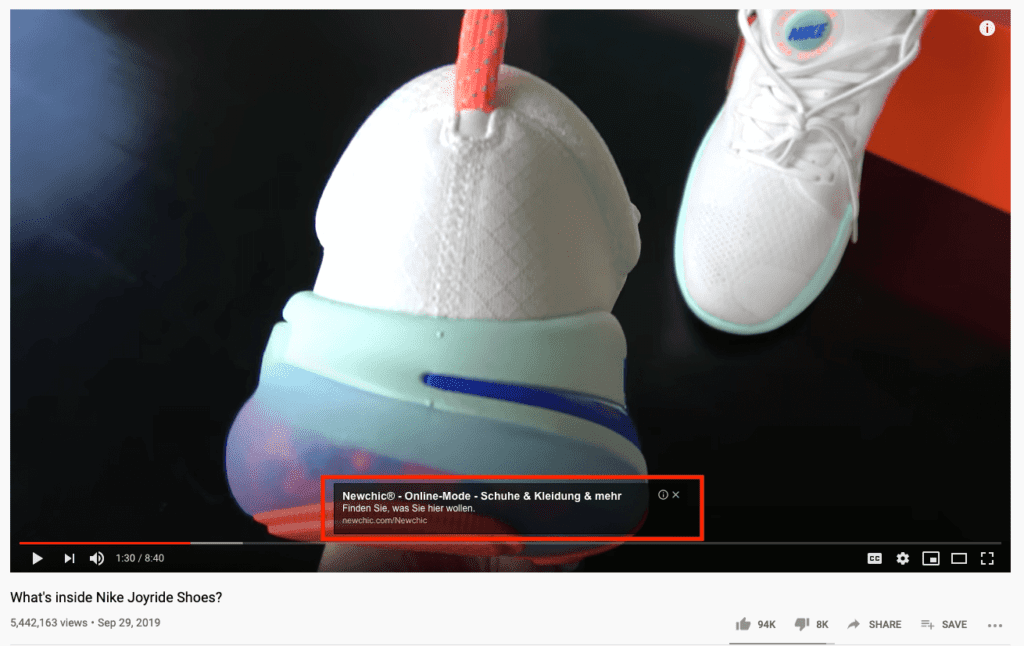
In this case, an advertiser gets charged when someone clicks on the ad.The main advantage of overlay ads: You can link to any website! Also, display ads can be spotted more easily by a viewer.The main disadvantage of overlay ads is that viewers are quick to close this ad type because it blocks the view of the video. Secondly, it’s not possible to have an overlay ad that lasts longer than 30 seconds.
"Be sure to include a compelling call-to-action on the overlay!"Display Specs Help
Overlay ads are a great way to drive traffic to your own YouTube channel or website. They can help to obtain new leads, improve sales, or increase brand exposure.For this to work on your YouTube channel, you first need to populate it with engaging, entertaining videos.
A YouTube Masthead is premium ads that appear atop the YouTube home feed. It’s placed on YouTube’s homepage for 24 hours, reaching roughly 60 million people (remember that YouTube receives more than 2 billion users/month?).The homepage ad can have multiple videos, CTAs, and social media sharing buttons. The YouTube Masthead is shown on both desktop and mobile devices.
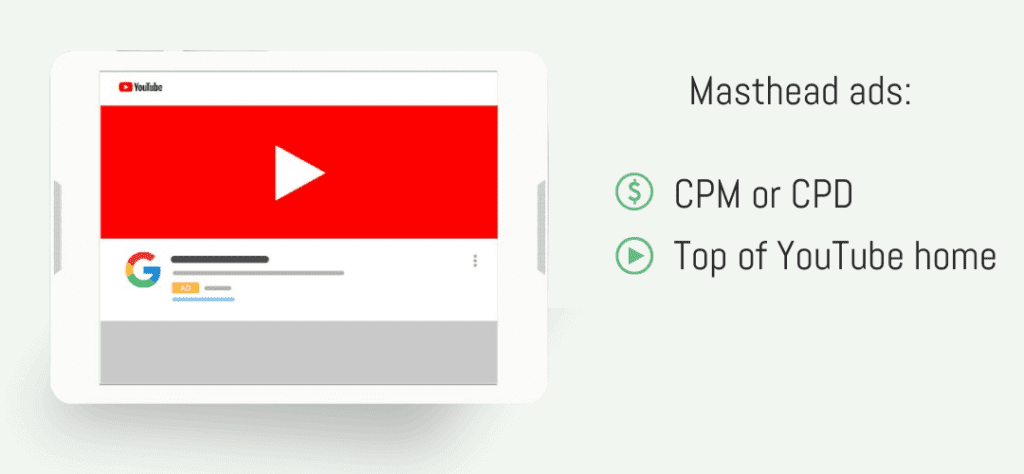
You can either be charged on CPM (pay per thousand impressions) or on CPD (cost per day) basis.
Since your ad will be shown to millions of viewers, YouTube has a few extra rules you need to follow. For example, if you want to advertise an alcohol or cigarette brand, you must complete an application with Google Ads.YouTube Mastheads are most often used by global brands with a goal of increasing brand awareness, for example, when launching new products.
"Use this format when you want to drive awareness for a new product or service or reach a massive audience in a short period of time (for example, a sales event)."Google Ads Help
So what’s the right format of a YouTube ad for your brand?
Of course, you can also combine multiple ad formats in one campaign, therefore, use the advantages of multiple ad formats.I hope that this guide to the world of YouTube ads was helpful for you. If you want to learn more on how to ensure your video creative is driving performance visit Think with Google.
.png)